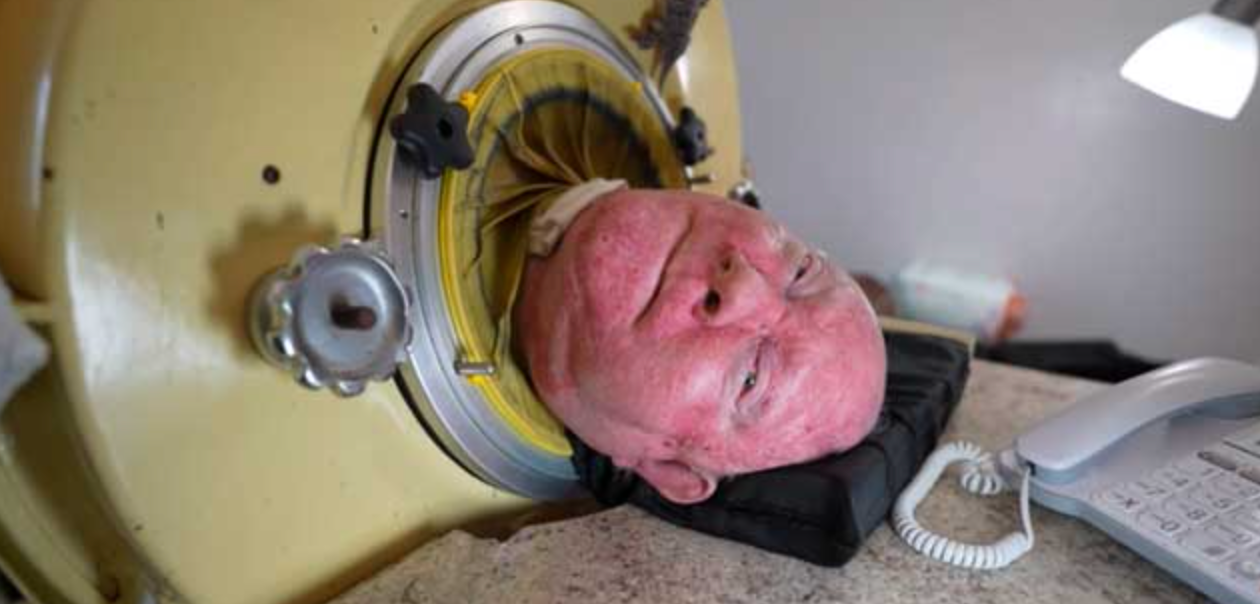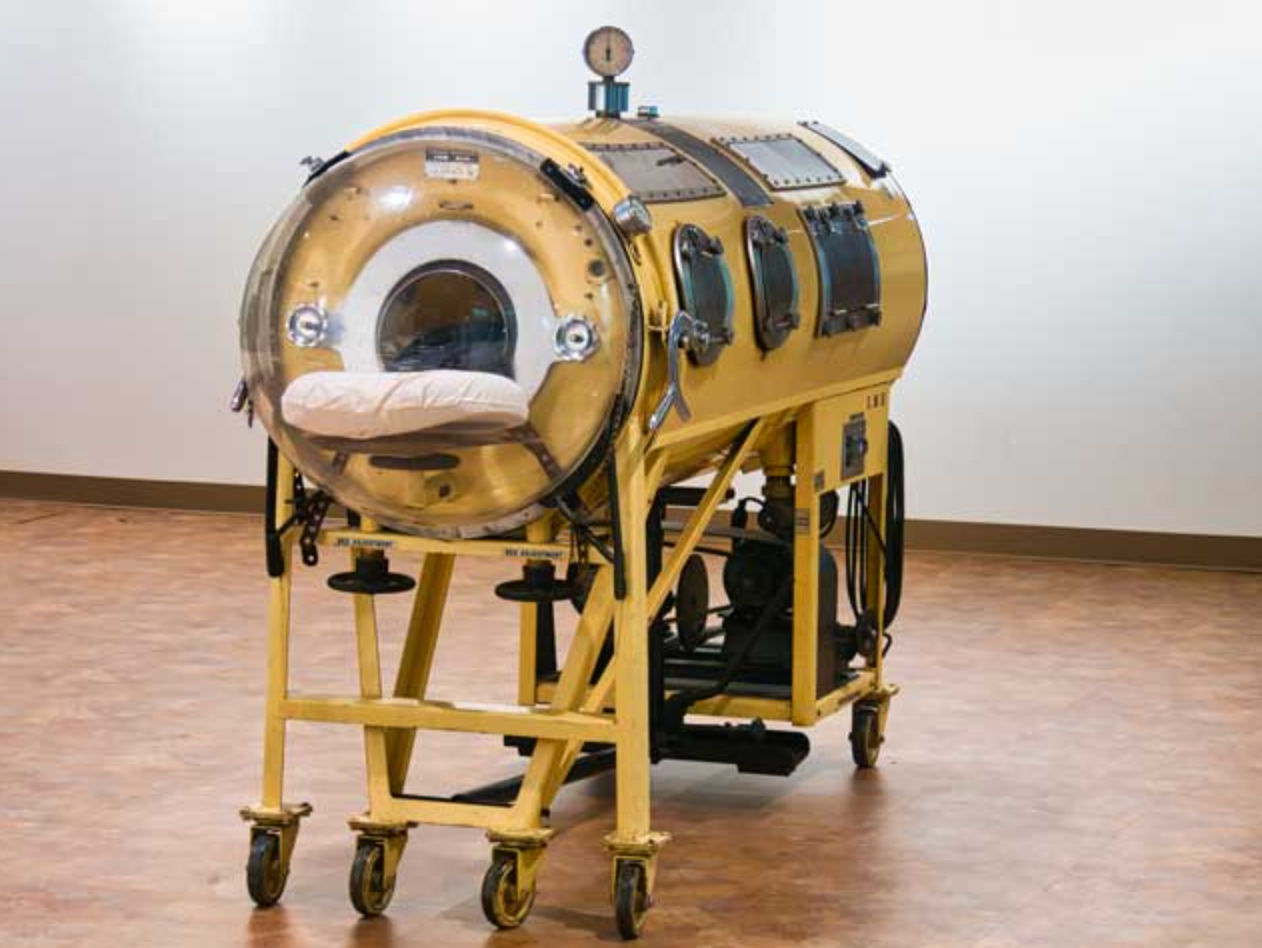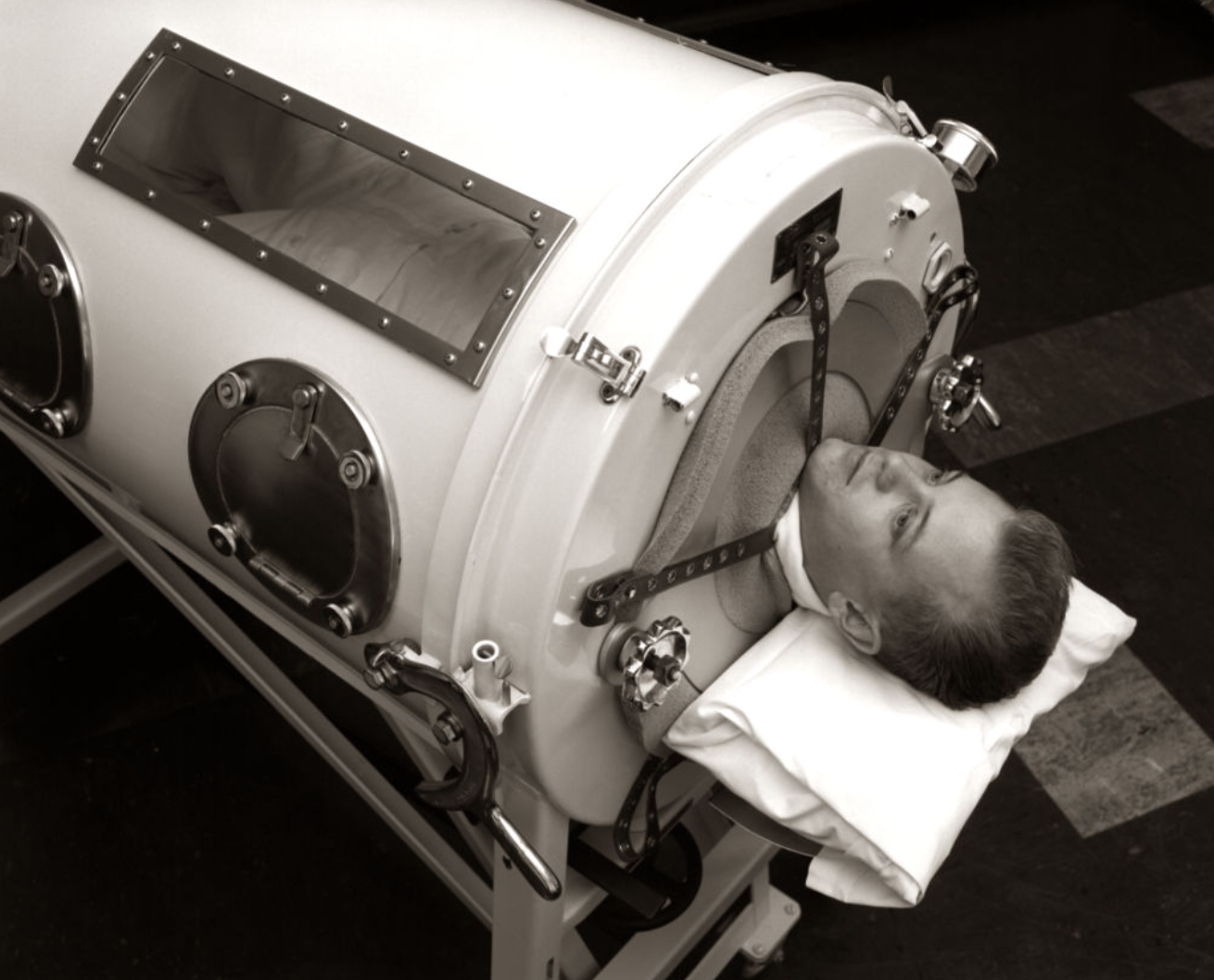76-year-old man, paralyzed from polio at 6, is one of the last people with an iron lung: ‘My life is incredible’
Paul Alexander, aged 76, has led a remarkable life unlike many others. For the majority of his existence, he has resided in an iron lung, making him one of the few remaining individuals worldwide reliant on this respiratory apparatus, which traces its origins back to 1928.
Despite his extraordinary circumstances, Paul has embraced life to the fullest, refusing to accept anything less.
“I am not going to accept from anybody their limitations on my life. Not gonna do it. My life is incredible,” asserts Paul.

At the tender age of six, Paul rushed into his family’s home in a Dallas suburb, complaining of feeling unwell. Until that point, Paul had been a typical, energetic child. However, something was amiss.
“Oh my God, not my son,” Paul’s mother lamented upon hearing the news.
Following medical advice, Paul spent several days recuperating in bed, but his condition worsened. It soon became apparent that he had contracted polio, a highly contagious viral infection. Within a week of falling ill, Paul lost the ability to swallow, hold objects, or breathe without assistance.
His parents rushed him to the hospital, where he joined numerous other children grappling with similar symptoms.
Before the advent of polio vaccines, the virus caused paralysis in over 15,000 individuals. Polio’s contagious nature meant it could spread even when carriers showed no symptoms.
Symptoms of polio encompass fatigue, fever, stiffness, muscle pain, and vomiting. In severe cases, it could lead to paralysis and death.

Initially declared dead by a doctor, Paul was given a second chance at life by another physician who performed an emergency tracheotomy. Subsequently, Paul was placed inside an iron lung to aid his breathing.
Regaining consciousness three days later, Paul found himself surrounded by rows of other children also confined within iron lungs.
“I didn’t know what had happened. I had all kinds of imaginings, like I’d died. I kept asking myself: Is this what death is? Is this a coffin? Or have I gone to some undesirable place?” recalls Paul.
Unable to speak due to his tracheotomy, Paul’s ordeal was compounded by his inability to communicate verbally.

“I tried to move, but I couldn’t move. Not even a finger. I tried to touch something to figure it out, but I never could. So it was pretty strange,” reflects the Texas native.
The iron lung, invented in the late 1920s, was revolutionary in its ability to ventilate patients. Commonly known as the “Drinker respirator” in its early days, the device hermetically sealed patients from the neck down, creating negative pressure to draw air into the lungs and expel it during exhalation.
Paul spent 18 months inside the iron lung, recovering from the initial polio infection. He was not alone; the year Paul contracted the virus, 1952, saw grim statistics.
Nearly 58,000 individuals, mostly children, contracted the virus in the U.S in 1952, resulting in 3,145 deaths.
Rows of iron lungs filled with children were a common sight, as Paul vividly recalls.
While some may have succumbed to despair, Paul’s determination only grew stronger.
Doctors passing by would remark, “He’s going to die today” or “He shouldn’t be alive,” but Paul was determined to prove them wrong.
And prove them wrong he did!
In 1954, he was discharged from the hospital, but life would never be the same for him.
“People didn’t like me very much back then,” Paul recalls. “I felt like they were uncomfortable around me.”
With the assistance of a therapist named Mrs. Sullivan, who visited him twice a week, Paul’s life gradually improved. Mrs. Sullivan struck a deal with him: if he could “frog-breathe” without the iron lung for three minutes, she’d get him a puppy.
It was a challenging task, but within a year, Paul was spending increasing amounts of time outside the iron lung.
At the age of 21, Paul became the first person to graduate from a Dallas high school – with honors – without physically attending classes. He then pursued college and, despite numerous rejections, was eventually accepted to Southern Methodist University.
“They said I was too crippled and did not have the vaccination,” recalls Paul. “Two years of tormenting them, they accepted me on two conditions. One, that I take the polio vaccine, and two, that a fraternity would be responsible for me.”
Paul went on to graduate from Southern Methodist University and subsequently attended law school at the University of Texas at Austin. After passing the bar exam, he became a lawyer in the Dallas-Fort Worth area.
“And I was a pretty damn good one too!” exclaims Paul.
Even after a 30-year career in the courtroom, Paul remained active, authoring a book entirely by himself using a pen attached to a stick.
According to Gizmodo, Paul is believed to be one of the last individuals alive today who still relies on the near-obsolete iron lung. Confined to his metal chamber around the clock, Paul has spent much of his life inside the contraption.
“I have travelled with it — put it in a truck, took it with me. I’ve gone to college with it, lived in a dorm. That freaked everybody out,” he shares.

While newer and more advanced ventilators have rendered his type of iron lung obsolete, Paul remains attached to his metal chamber. He even had to make a desperate YouTube plea when the iron lung nearly broke down seven years ago. Fortunately, spare parts are still available from abandoned machines across the country, and Paul has received help from technology enthusiasts.
“A lot of people who had polio and they’re dead. What did they do with the iron lung? I’ve found them in barns. I found them in garages. I’ve found them in junk shops. Not much, but enough to scrounge [for] parts,” he remarks.
Now, having outlived his parents and older brother, Paul is working on a second book!
Paul attributes his fulfilling life to his refusal to give up.
“I wanted to accomplish the things I was told I couldn’t accomplish,” he asserts, “and to achieve the dreams I dreamed.”
While polio has been eradicated from the United States since 1979, sporadic cases stemming from vaccine-derived strains remain a concern.
Related posts:
Related Posts
-
 Burn rosemary at home, surprising what happens a few minutes later
No Comments | Dec 11, 2023
Burn rosemary at home, surprising what happens a few minutes later
No Comments | Dec 11, 2023 -
 Brother Wants to Adopt His Little Sister after Dad’s Death, Finds Out His Wife Is against It
No Comments | Nov 22, 2023
Brother Wants to Adopt His Little Sister after Dad’s Death, Finds Out His Wife Is against It
No Comments | Nov 22, 2023 -
 Beware of the Giant Wolf Locking Eyes with a Woman
No Comments | Nov 13, 2023
Beware of the Giant Wolf Locking Eyes with a Woman
No Comments | Nov 13, 2023 -
 How to watch the 2023 solar eclipse over the U.S. Saturday
No Comments | Oct 13, 2023
How to watch the 2023 solar eclipse over the U.S. Saturday
No Comments | Oct 13, 2023
